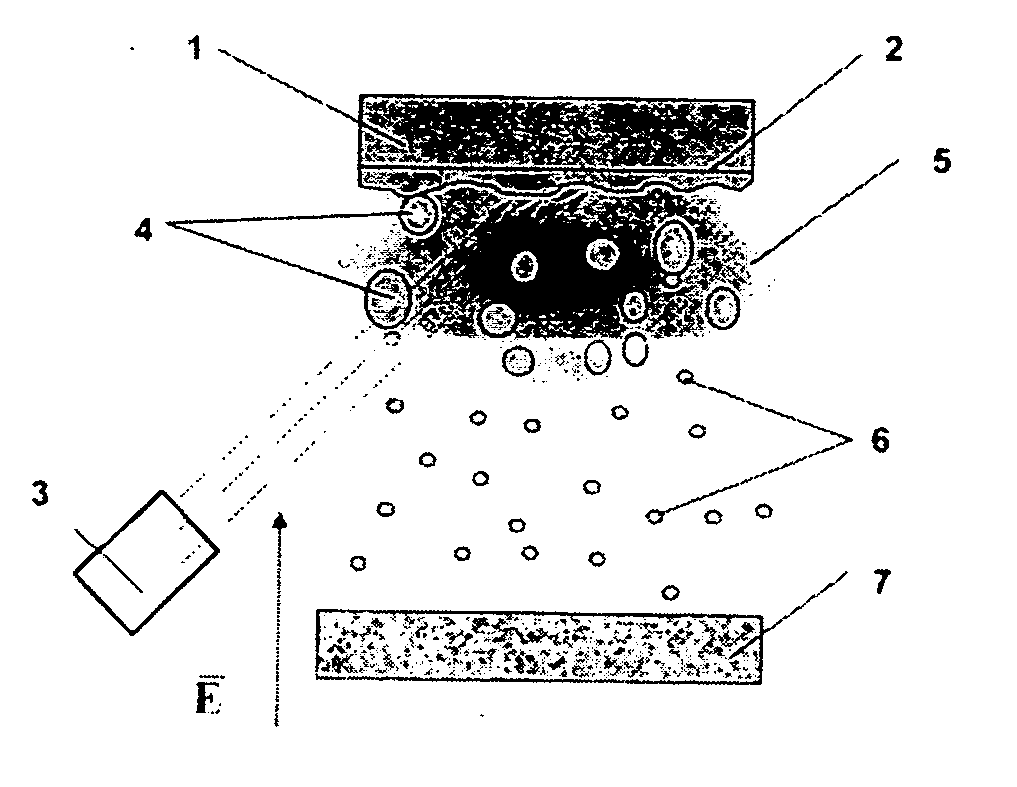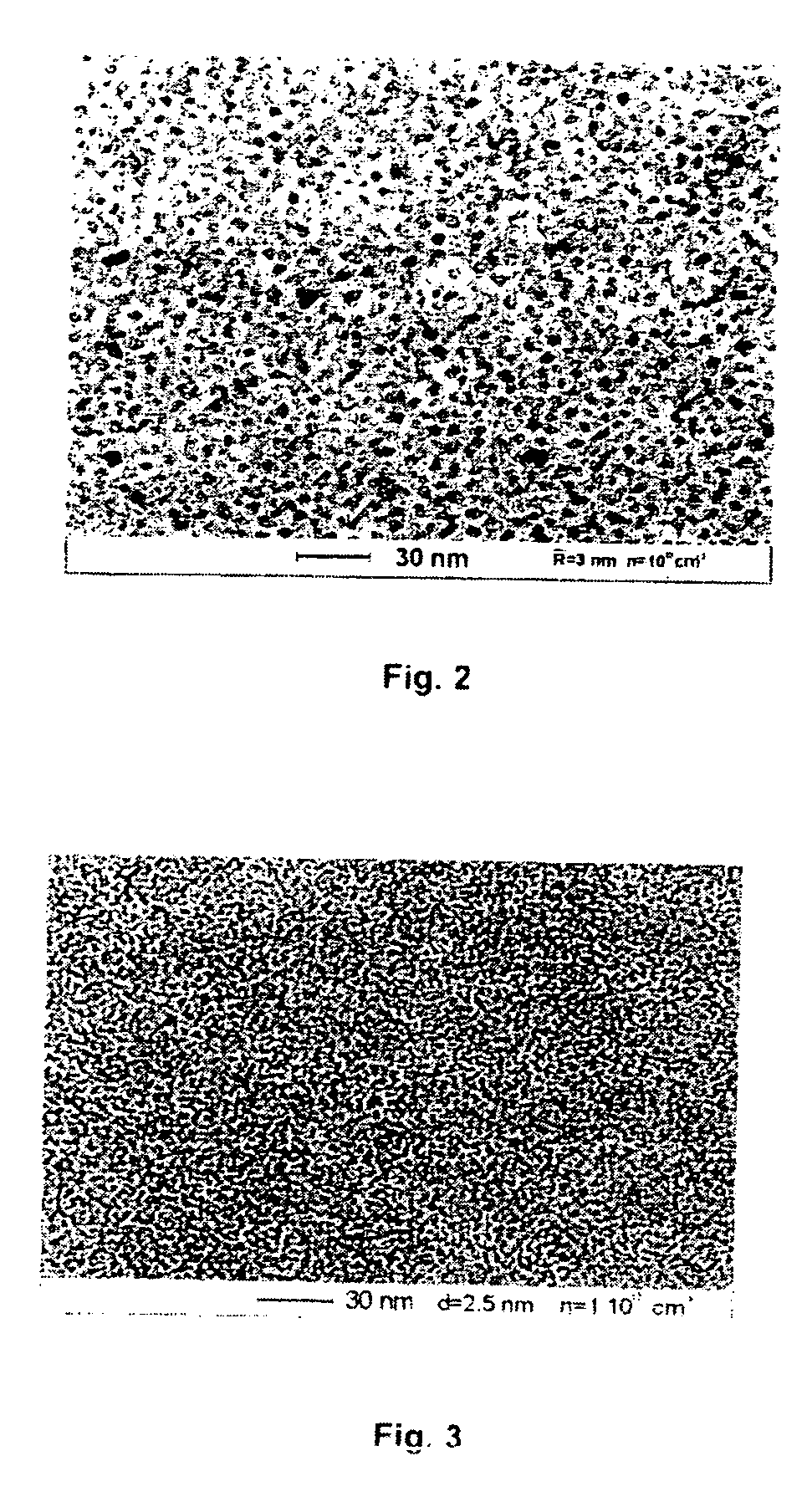Method for obtaining nanoparticles
a nanoparticle and nanoparticle technology, applied in the direction of solid-state diffusion coating, plasma technique, transportation and packaging, etc., can solve the problems of inability to design efficient nanoelectronics, inability to use structures of this kind inability to use structures such as structures to create catalysts operating in the maximum efficiency mode, etc., to achieve the effect of high density of nanoparticle packing and increasing the efficiency of conversion of starting materials
- Summary
- Abstract
- Description
- Claims
- Application Information
AI Technical Summary
Benefits of technology
Problems solved by technology
Method used
Image
Examples
example 1
[0054] The claimed method for obtaining nanoparticles was practiced on the basis of laser dispersion of such metals as copper and nickel (see FIG. 1). In this case, irradiation of the surface of the metallic target 1 with a pulsed-periodic laser 3 leads to melting of the surface layer 2 of the target 1 and the material of the target 1 evaporates. As a result of an optical breakdown of the vapor formed, a plasma zone 5 with a thickness L≧100 μm is formed near the surface of the molten layer 2 of the target 1. Under the action of plasma 5, the molten surface layer 2 becomes unstable, which leads to dispersion of the metal to give liquid particles 4 from the metal of the target 1, with the maximum and minimum radii of these particles being R=1 μm and r=100 nm, respectively. Liquid drops 4 formed as a result of dispersion are fed into the plasma zone 5, which is heated by absorbed laser light. In the plasma zone 5, drops 4 are charged to the floating potential, so that their charge is m...
example 2
[0059] The claimed method was practiced on the basis of an installation for plasma-assisted electrodispersion, which is shown schematically in FIG. 4. Molten metal was dispersed by applying to a metallic pointed cathode 9 with a radius of tip curvature not exceeding 10 μm an electric field with a strength at the tip apex of no less than 107 V / s.
[0060] Molten drops 4 obtained at the tip 8 are delivered to the plasma zone 5 created by a stationary or quasi-stationary discharge in an inert gas at a pressure of 10−3-10−1 Pa, to be charged there. The electron density in stationary discharges at these pressures is on the order of ne=1010-1011 cm−3, and, in accordance with condition (1), the required temperature of electrons should exceed 500 eV. To create such a temperature, the potential difference between anode 9 and cathode 10 was set to be no less than 2 kV.
[0061] For drops 4 not to have enough time to be charged to the floating potential, i.e., for condition (2) to be satisfied at ...
PUM
| Property | Measurement | Unit |
|---|---|---|
| grain size | aaaaa | aaaaa |
| size | aaaaa | aaaaa |
| power density | aaaaa | aaaaa |
Abstract
Description
Claims
Application Information
 Login to View More
Login to View More - R&D
- Intellectual Property
- Life Sciences
- Materials
- Tech Scout
- Unparalleled Data Quality
- Higher Quality Content
- 60% Fewer Hallucinations
Browse by: Latest US Patents, China's latest patents, Technical Efficacy Thesaurus, Application Domain, Technology Topic, Popular Technical Reports.
© 2025 PatSnap. All rights reserved.Legal|Privacy policy|Modern Slavery Act Transparency Statement|Sitemap|About US| Contact US: help@patsnap.com



